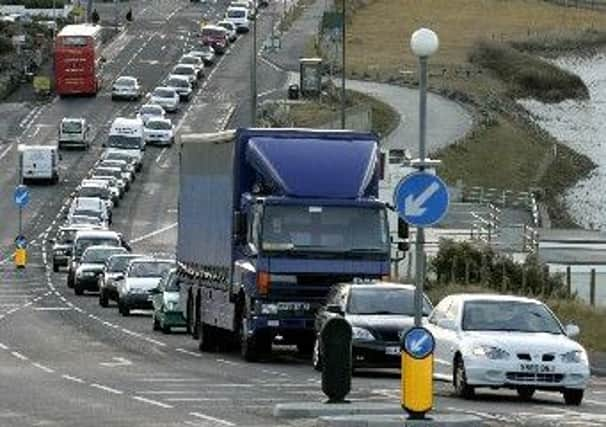Councillors back residents' call for traffic review in Rottingdean


Deputy leader of Brighton and Hove City Council Gill Mitchell said that 67 per cent more passengers are being carried on buses in peak hours since a bus priority scheme was introduced on the A259, with a 27 per cent reduction in journey time.
Cllr Mitchell said: “Perhaps the main infrastructure required to alleviate pressure on the A259 is already in place, and what is needed is more buses, and more people to use them.”
Advertisement
Hide AdAdvertisement
Hide AdShe was speaking at the Full Council meeting last Thursday (April 6), after a petition signed by more than 5,000 people was being presented by SAFE Rottingdean and other local focus groups.
The petition called on Brighton and Hove City Council to carry out traffic evaluation studies in order to tackle the worsening peak time traffic build-up on the A259. It also called on the council to cease approving any future building projects without appropriate infrastructure to support them.
Vice chairman of SAFE Rottingdean Lynne Moss said Brighton and Hove Buses had confirmed a 10 to 15 minute added journey time between Brighton and Eastbourne due to increased congestion.
But Cllr Mitchell claimed the council’s adopted plan is supported by traffic data, and will accommodate any future growth in terms of infrastructure.
Advertisement
Hide AdAdvertisement
Hide AdShe said there was no simple or quick solution to the congestion on the A259 as a possible link road would have to go through protected down land in the national park, and would only attract more traffic.
Cllr Mitchell said: “In return for such a major investment the government would want to see more housing delivery to boost the economy, not less.”
Sean Flanagan, a committee member of SAFE, said: “It is inappropriate to have new housing developments when the existing infrastructure is already so far over capacity.”
He claimed planning officials consider building applications individually without looking at their cumulative impact.
Advertisement
Hide AdAdvertisement
Hide Ad“We don’t want to stop developments, we want to make sure that they are appropriately supported,” he said.
Nigel Smith, chairman of SAFE, said coastal erosion must be taken into consideration in plans of future infrastructure works on the south coast.
According to data in the Brighton Marina to Newhaven Western Harbour Arm Plan, the possible future retreat of coastal cliffs varies between 31.4m to 90.82m over the next 100 years.
With such an erosion rate there is a risk of loss of the A259 between Rottingdean High Street and Saltdean in just 15 years if there was no maintenance of the defences.
Advertisement
Hide AdAdvertisement
Hide AdThis could make it necessary to reroute the road inland in the future.
Mr Smith said the sheer number of possible options to tackle the traffic congestion on the A259 shows that there is a problem.
“If we get the base data, we can see where the problem is,” he said.
There are mixed views over the root of the problem.
Brighton and Hove city councillor Lynda Hyde blamed a bus lane on the A259 at Rottingdean for worsening congestion.
Advertisement
Hide AdAdvertisement
Hide Ad“My personal view is that the bus lane increases the congestion on the A259, and if it was taken out I would be happy,” Cllr Hyde said.
But Andrew Boag, chair of Brighton Area Buswatch, said: “A lot of non-bus users blame bus lanes for the increase in congestion. In fact, congestion has been getting steadily worse throughout the city in recent years, including areas where there are no bus lanes, like Dyke Road and New England Road.
“The local A259 bus lanes are certainly a success. They have reduced bus journey times leading to a 63 per cent increase in bus use and improvements to highly successful 12X express service which is being enhanced to cope with increased demand from April 24. In the morning peak buses on the coast road carry 45 per cent of the people in just two per cent of the vehicles. So the case for bus priority measures is overwhelming. Buses provide a real alternative for car drivers who see the benefits when buses whiz by while they are stuck in a slow moving queue towards Rottingdean.
“Most Brighton and Hove buses are low emission vehicles which are making a valuable contribution to improving air quality in the Rottingdean area.”
Advertisement
Hide AdAdvertisement
Hide AdAt the meeting last week, the petition was given support by councillors, and it has been referred to the environment, transport and sustainability committee for consideration at its meeting on Tuesday, June 27